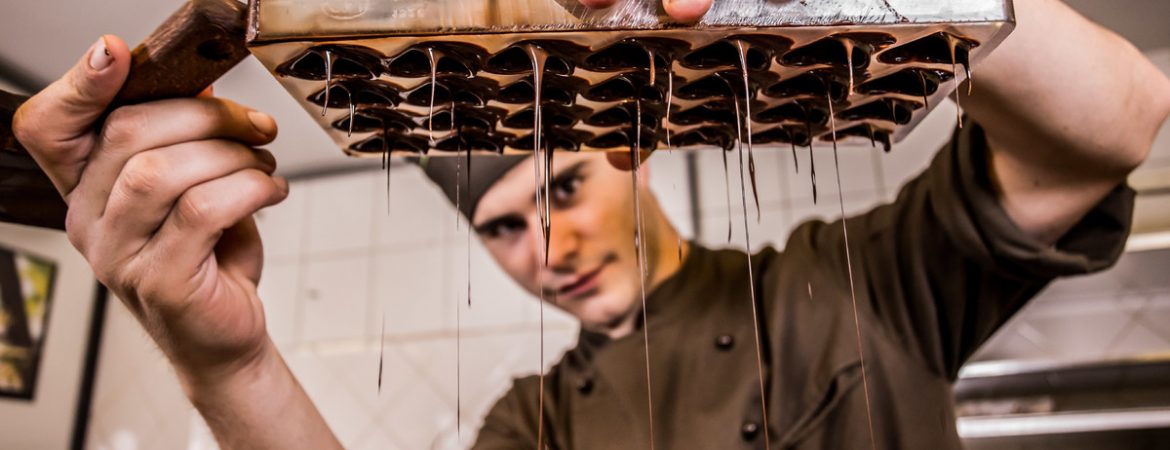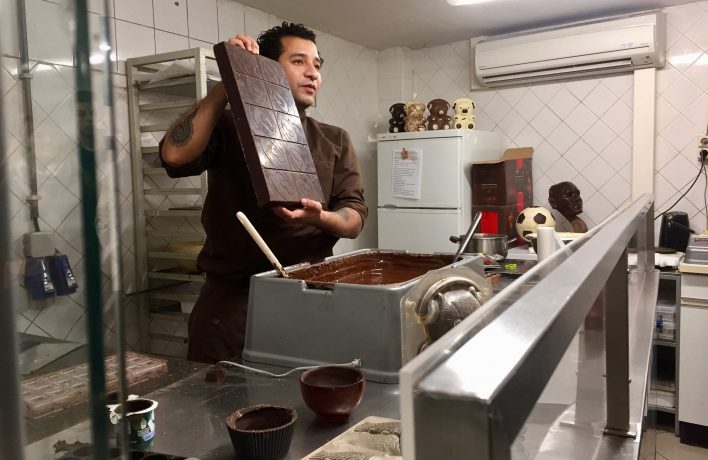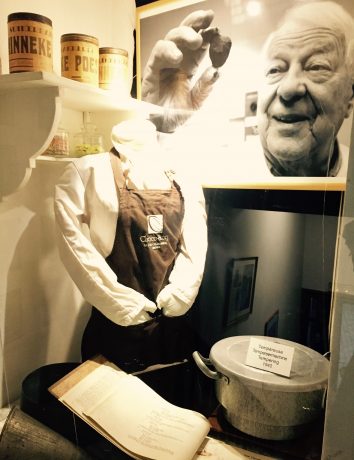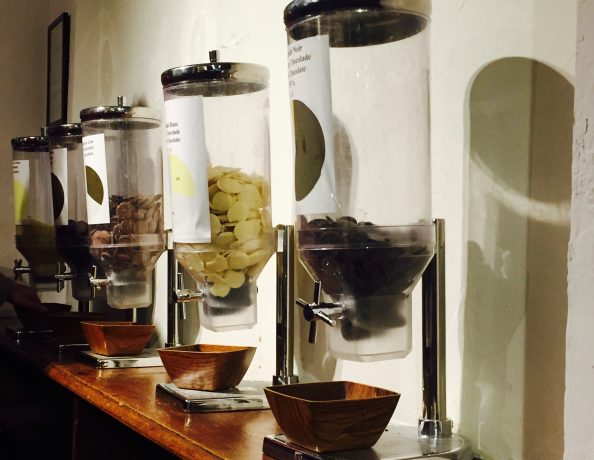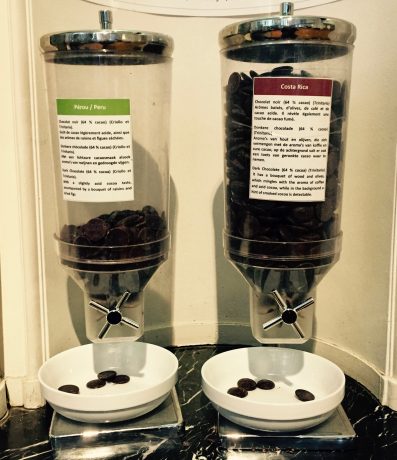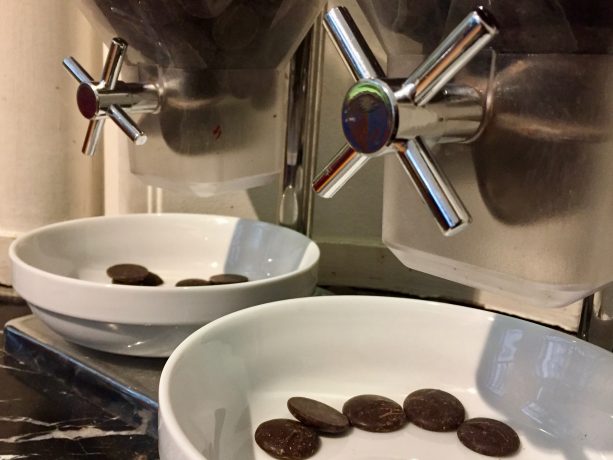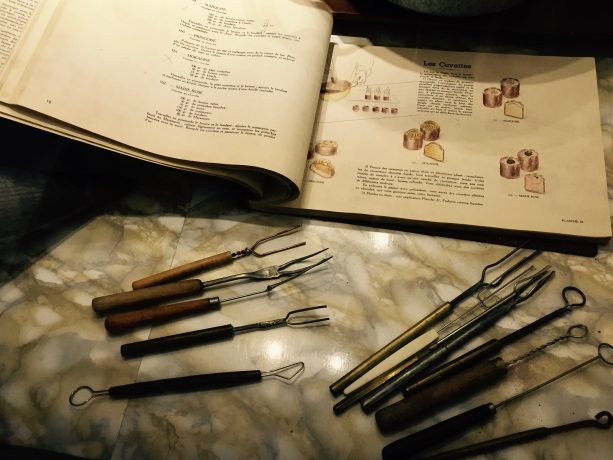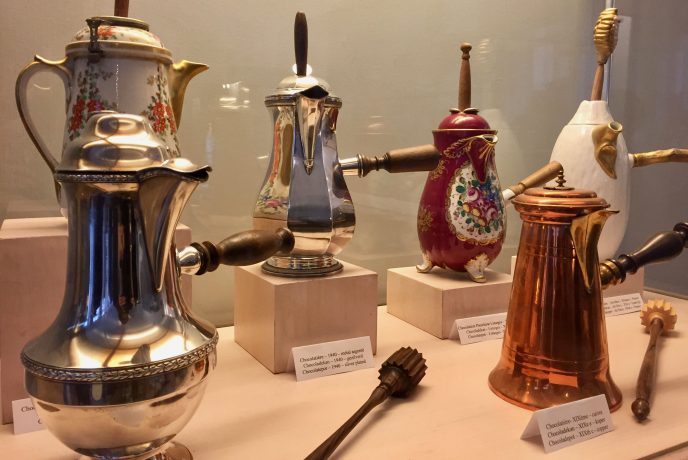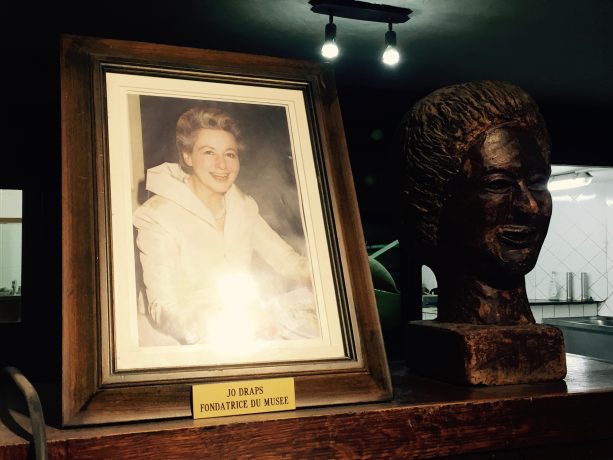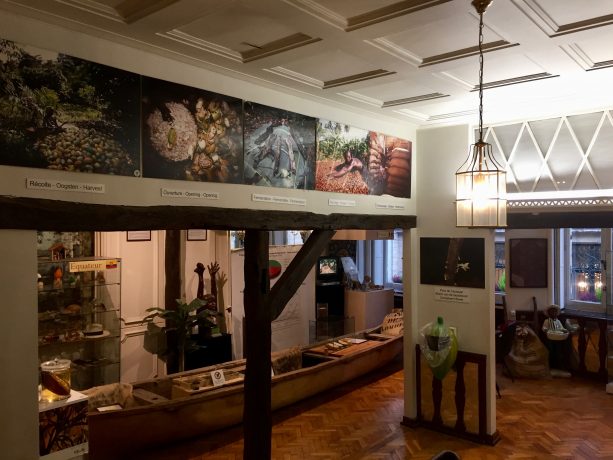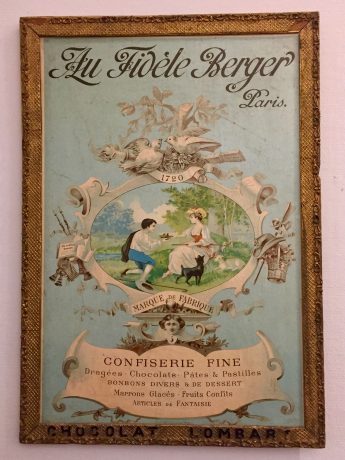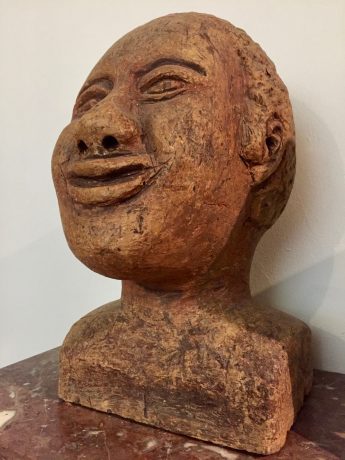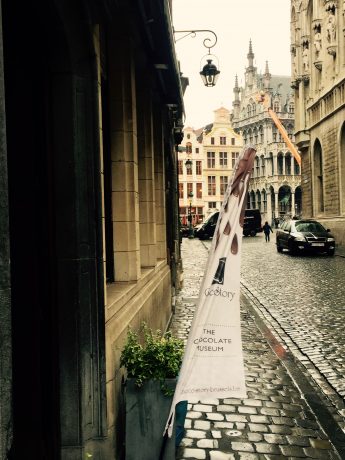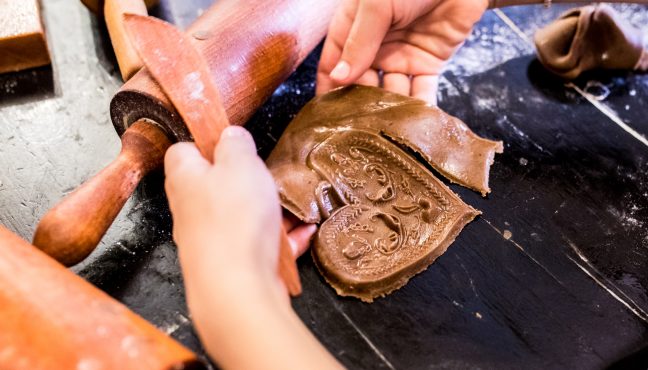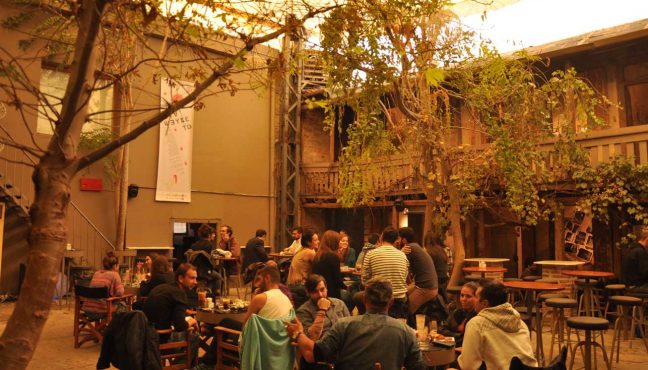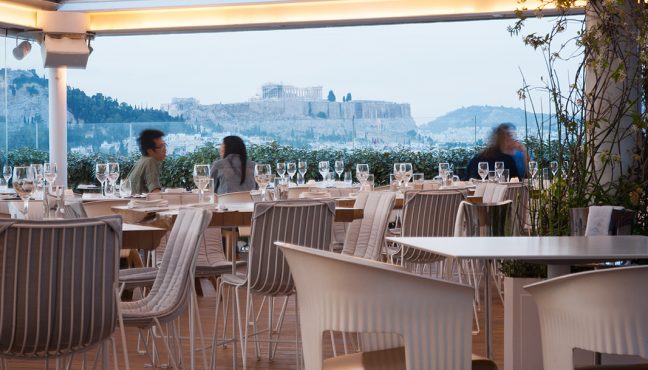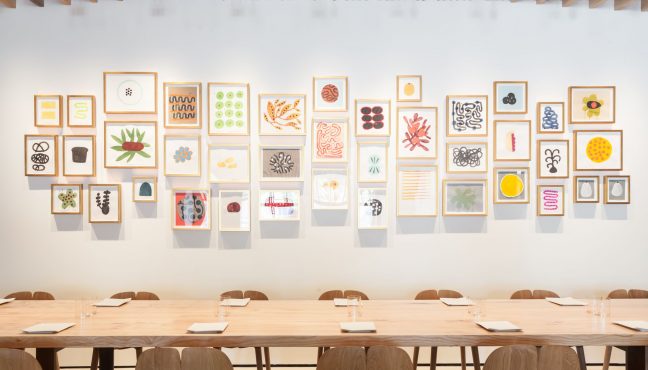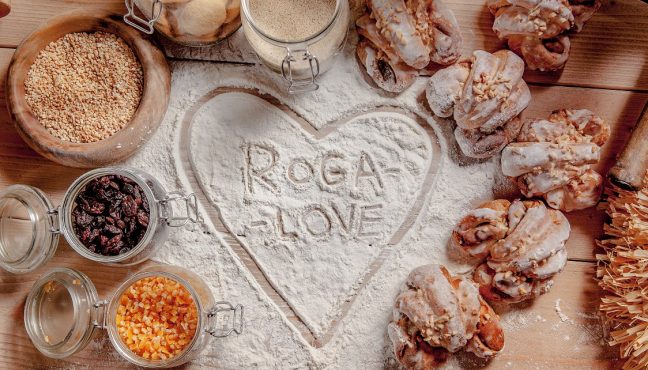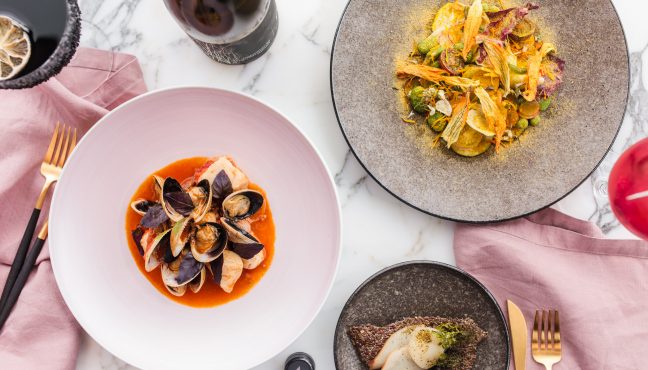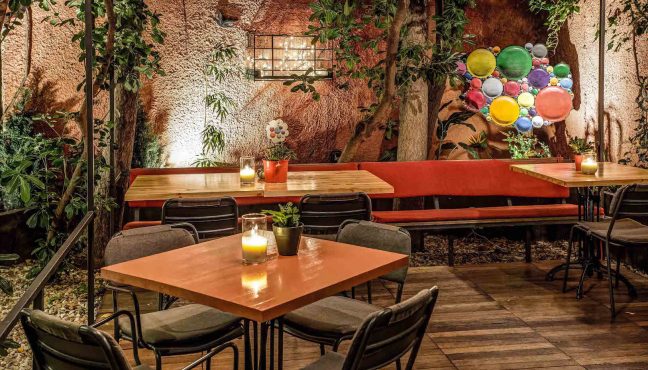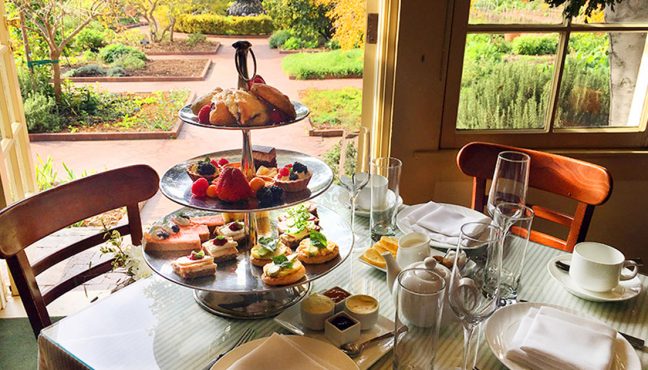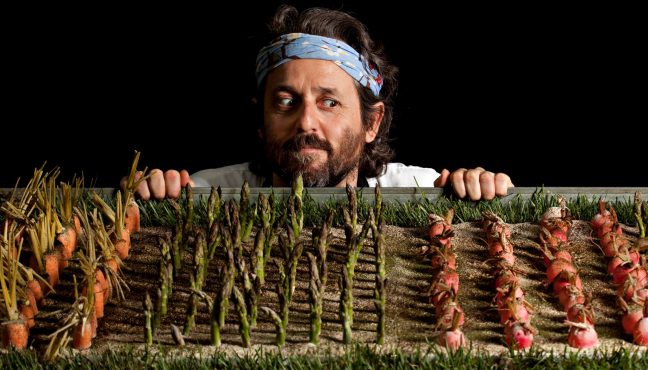For centuries, experiencing food has been a great part of traveling, discovering new cultures, and new foreign routines. Food describes societies and their climate, nature, and history. That is why eating and drinking is usually the most enjoyable part of visiting new places. What is Brussels for everyone around the world then? We could probably list here french fries (double mayonnaise!), beer, and mussels, but first of all, it’s chocolate, and with chocolate you can do both: eat and drink.
In Brussels, you can find a few Chocolate Museums, but the one we have chosen to visit is located right next to the picturesque Grand Place. Hidden in a little street, it attracts the passersby with warm light shining through yellow windows. Especially in the autumn-winter time, when the weather in Brussels is not generous at all, it’s a good idea to come inside. The smell of chocolate strikes you straight away and spreads everywhere inside.


It all starts with the cocoa bean. The word „cocoa” comes from the Maya term kakaw, represented by a glyph in the shape of a fish, which has evolved over time. The spicy cocoa drink was called by them Xocoatl, which is the origin of the world chocolate. The history of everyone's favorite sweet goes back centuries.
Before visiting the actual display, which is full of chocolate history and general knowledge facts about chocolate, there is a show that everyone can attend. The Chocolate Master presents how to make the best pralines, as pralines are actually Belgian inventions. In 1912, chemist Jean Neuhaus invented the first bite-sized chocolates, which he could sell in his pharmacy shop. Currently, Neuhaus is one of the best chocolate brands in Belgium. While waiting for the demonstration, everyone can try bites of different types of chocolates (there is also chocolate fondue you can try with a biscuit). First, you can actually taste the difference between cocoa butter and cocoa mass. Both of them are the two most important ingredients of chocolate, depending of the proportion and extra elements like sugar or milk, as they become milk chocolate, dark chocolate or white chocolate (which shouldn’t be called chocolate at all as it’s just unhealthy fat!). Basically, the cocoa mass is what has the most nutritious components as it’s full of magnesium, iron, potassium, and vitamins: A, B1, B2 and E . That is why dark chocolate is the best one to have and 30 grams each days helps with your health and mood. It works as anti-depressant and is full of antioxidants.


At the beginning of the show, the Chocolate Master explained all of these dependencies, which actually makes you feel good about trying more and more of presented chocolate. He emphasized the fact that white chocolate shouldn’t be call chocolate, because it has only cocoa butter, milk and sugar. Few of the white chocolate lovers among the audience felt disappointed… The biggest part of the presentation was demonstrating how to achieve the perfect temperature for chocolate in order to make shiny pralines with great shapes out of it. The temperature needs to be very precise as when it’s too cold, the cocoa butter makes ugly, white stains on the surface, but when it's too hot, the temperature makes it sticky and impossible to take out of its form. Even with chocolate is where math and physics are ruling! At the end of the show, the audience can actually try the pralines, either caramel or violet ones. It’s a great way to start the visit for a huge portion of geek facts.
The museum is divided into the sections representing the biggest producers of the chocolate in the world; the history is hidden in between. There are also more chocolate stands to try little bites and discover the difference between e.g. the chocolate from Peru or Costa Rica. Chocolate arrived in Europe along with Spanish and Christopher Columbus, during his fourth voyage to America in 1502. Though it was in 1528 when Hernando Cortez brought it back from Mexico, which made it rapidly popular.
However, the emphasis here needs to be put on the history of the Belgian chocolate. The first trace of it in Belgium dates back to 1635, when some of it was bought by the abbot of Baudeloo in Ghent. At the end of 17th century, Emmanuel Soares de Rinero, originally from Portugal or Spain, was issued with a license to manufacture chocolate in Brabant. As in the rest of Europe, chocolate-making really bloomed in the 18th century, when several manufacturing centers sprang up in all the major cities. At that time, chocolate was worth 15 loaves of bread and only upper class could afford it. In the 19th century, chocolate prices started to fall and it was more affordable for everyone.


What are the best Belgian chocolate brands that are absolutely worth trying? Besides the previously mentioned Neuhaus, another one is called Cote d’Or and was started by two chocolate makers, Michiels and Bieswal, in 1870. The legends says that their famous elephant, the brand's symbol, comes from a stamp from Ghana that read „Gold Coast”. There is also chocolate factory called Jaques, founded by Antoine Jacques in 1896. His original goal was to manufacture chocolate, candy and gingerbread. One of the world’s current leading brands is Callebaut, created in 1911, although it was not until the end of World War II that they began specializing in manufacturing fine quality confectionery chocolate. The next is Godiva, who's story began in 1926 in the basement of Draps family home in Molenbeek, Brussels. In the wake of World War II, the three brothers who stared the whole concept decided to call it Godiva. Now, Godiva’s stores are all over the world and its chocolate is very popular in America. The last of the famous Belgian chocolate brands is called Leonidas; its name comes from the young Greek who moved to Belgium from the United Stated at the beginning of 20th century. His goal was to make Belgian pralines affordable for everyone, not only the upper class. That’s when pralines started to be sold from an open window to the street. His pioneering „guillotine” window idea was an immediate success.


A visit to Choco Story Chocolate Museum will leave you with the full stomach and full brain. Not everyone is aware of the rich history behind this favorite food of all time, but after finding out about all the health benefits, it will make eating chocolate even more special. An absolute must when you’re in Brussels!
